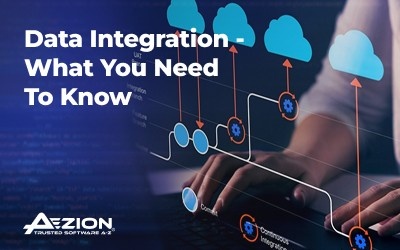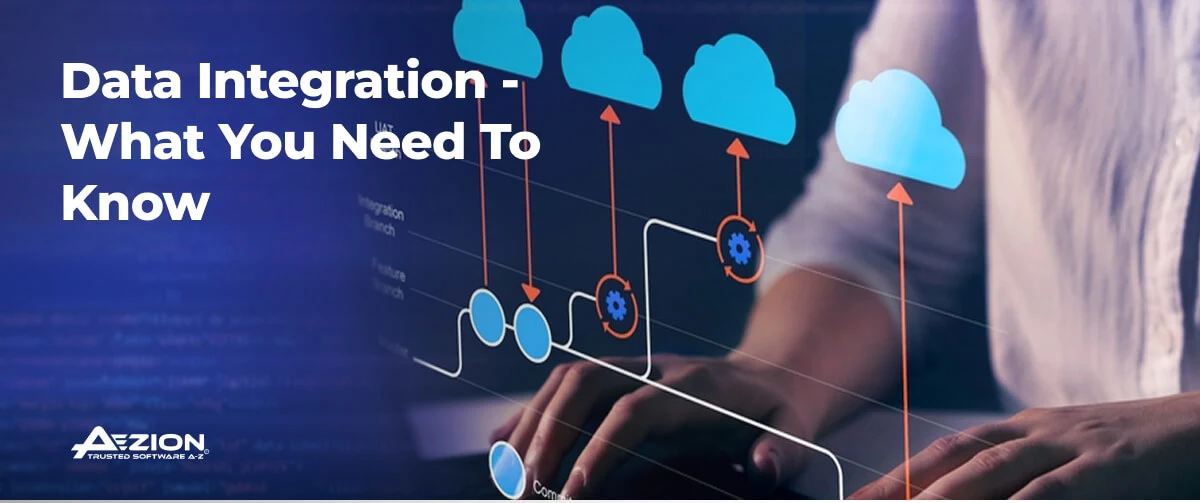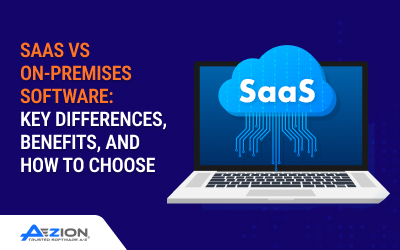Summary
Data integration is one of the pillars of data strategy, through which organizations can bring data from multiple sources into a unified view. This process enables the disintegration of data silos, improved data quality, and quick decision-making through the delivery of reliable and consistent data to inform operations and analytics. The following blog will cover data integration, why it is required, and what the best practices and most recent technologies used for integration are now.
Introduction
As businesses grow, their data landscapes become progressively more complex. This is because different systems and departments generate massive amounts of data spread across databases, legacy systems, cloud software applications, and third-party websites. Whenever data is not acknowledged from the point of origin, data silo occurs. This leads to operational inefficiencies, different insights, and lost opportunities.
Data integration is the technology that helps organizations to resolve data silo issues by connecting data sources, converting and normalizing the information and placing it wherever it is needed. The data integration market is projected to grow from $13.97 billion in 2024 to $15.22 billion in 2025. To help support greater customer service, automation, and AI efforts, data engineering companies also incorporate their data engineering strategy with a data integration plan and build strong, adaptable, and fit-for-purpose data architecture.
In this blog, we will learn more about Data Integration along with its best practices.
What is Data Integration?
Data integration consolidates data from various sources into a standard, consumable form. Data integration is the integration layer between multiple systems so that all organizational information, regardless of source, is made available, understandable, and consumable as one.
The process usually involves three key phases:
- Extraction: Data is harvested from various sources, e.g., databases, APIs, file systems, or streams.
- Transformation: Raw data is cleaned, formatted, enriched, and structured to meet the target schema or business needs.
- Loading: Loaded processed data into a target system such as a data warehouse, data lake, or analytics platform.
Why Data Integration Matters?
In the modern competitive, data-driven world, information needs to be timely and accurate. Without integration, data is fragmented. Its spread across platforms, formats, and business units makes creating insights or providing seamless user experiences challenging. Data integration makes all the systems work together, and decision-makers have unified, reliable information at their fingertips when needed.
For instance, marketing and sales teams often operate on separate platforms. Without integration, what the customer file says in the CRM may not be accurately updated concerning their latest product usage and service requests. Integration closes that gap, providing a unified view that enables teams to personalize, upsell, and engage more meaningfully.
Operationally, from a business standpoint, integration minimizes redundancy, dispenses with manual reconciliation and its associated errors, and enhances data quality. It simplifies interdepartmental collaboration, assists in regulatory compliance, and sets the stage for advanced analytics, machine learning, and automation. Short and sweet, data integration is far more than a back-end capability; it’s an agility and innovation business strategy enabler.
Methods of Data Integration Techniques
Organizations use different methods to consolidate data based on their architecture, performance requirements, and complexity. The appropriate way reconciles scalability, real-time access, and consistency, particularly as businesses embrace cloud, mobile, and AI-based solutions. The following are the primary methods, featuring a customer-focused approach that’s increasingly critical in digital business.
1) Customer Data Integration (CDI)
Customer Data Integration (CDI) is the collection of customer-related data from various systems, such as CRM software, support applications, billing applications, and marketing databases, into a single, trusted view. This allows businesses to understand customers from end-to-end so that there is better personalization, interaction, and service delivery.
CDI removes inconsistency due to broken customer records and enforces data privacy compliance through centralized control. For data engineers, CDI implementation means creating pipelines that normalize identifiers, eliminate duplicates, and provide real-time synchronization among touchpoints along the customer lifecycle.
2) ETL (Extract, Transform, Load)
The ETL process represents the extraction of data from source systems. Transforming that data to fit the target schema or the analysis needs of the organization, and finally, loading that data into a central repository such as a data warehouse. ETL is generally thought of as a batch process, typically focused on the movement of large volumes of structured data.
ETL pipelines allow for complex transformations and additional data enrichment opportunities; therefore, traditionally, ETL was mainly utilized in legacy enterprise BI architectures. However, since transformation is done before data loading into the central repository, this leads to a latency issue, and ETL is not traditionally thought of with real-time use cases.
3) ELT (Extract, Load, Transform)
ELT completely flips ETL on its head. In an ELT process, the source data is first loaded into the target system in its RAW FORM and then transformed based on the power of that environment. Data is being migrated using modern cloud-based and scalable solutions in that environment, such as Snowflake, BigQuery, or Redshift.
Since the transformation occurs after loading the data into the target system, ELT provides a greater opportunity to ingest source data in real-time from source systems and expands opportunities to analysts and data scientists. ELT also allows for schema-on-read capabilities, which are becoming more important in our dynamic analytics & data world.
4) Real-Time Data Integration
Real-time data integration can be considered the ongoing movement of information between systems with as close to zero latency as possible. It typically involves continuous event-driven systems to stream platforms spanning from event or stream processing, such as Apache Kafka or Change Data.
Technologies Enabling Data Integration
With increasing data volumes and business requirements, traditional methods are no longer enough. Today’s data integration is based on highly powerful, scalable technology that simplifies complexity, increases speed, and enhances agility. These technologies increase data accuracy and efficiency and decrease the engineering overhead of running and changing data pipelines.
1) AI in Data Integration
Artificial intelligence in data integration brings intelligence to otherwise manual or rule-based operations. Machine learning algorithms can automate data mapping, anomaly discovery, schema matching, and transformation logic generation. This shortens setup time, reduces the risk of human error, and enables integration to sense changes in data structures or business logic.
For data engineers, AI-powered integration tools provide schema alignment recommendations, identify outliers in real time, and learn continuously from usage habits to enhance performance. AI is also central to metadata management, allowing more efficient governance and lineage tracking.
2) Cloud-Native Data Integration
Cloud-native data integration uses cloud-specific services designed for distributed, scalable cloud platforms. Platforms such as AWS Glue, Azure Data Factory, and Google Cloud Dataflow are designed to support seamless data ingestion, transformation, and orchestration within multi-cloud and hybrid infrastructure.
Cloud-native platforms provide elastic computing, event triggers, and support for native streaming data and APIs. They also enable global-scale deployment, making them an excellent choice for businesses that span geography or need always-on analytics. Data engineers enjoy shorter development cycles, serverless execution, and extensive integrations with wider cloud stacks.
3) Other Tools and Technologies
Aside from AI and cloud platforms, other technologies play a supporting role in contemporary data integration strategies:
- Data Virtualization: Enables access to data throughout systems without movement.
- Reverse ETL: Sends data back into operational tools such as CRMs and SaaS applications for activation.
- Metadata Management: Facilitates uniform understanding and governance of data assets.
- Frameworks: Apache Airflow and Prefect help govern complex and interdependent workflows with monitoring and retry logic.
Best Practices for Effective Integration
More system integration is needed to create a robust and scalable data integration platform. It requires strategic decisions on architecture, governance, and maintenance. Adhering to best practices maintains data consistency, minimizes downtime, and increases long-term agility when data needs shift.
- Set Specific Objectives: Start with an enterprise-driven integration strategy. Understand the types of data available, where they come from, and how they will be consumed.
- Data Quality and Governance: Integration is as good as the data it transports.
- Scalable Design: Select technologies and approaches that scale with the variety, velocity, and volume of data. Event-driven models and cloud-native tools prevent bottlenecks.
- Automation: Leverage AI-powered mapping and implementation tools to decrease effort and speed up execution. Automating tests and monitoring also increases reliability.
- Monitor and Optimize Ongoing: Embed observability in your pipelines. Monitor performance, catch failures early, and adjust models or schemas ahead of change.
- Interoperability Architectures: Design to future-proof with open standards and API-first philosophies, allowing separate systems to advance independently without breaking the entire process.
By adhering to these principles, data engineers can develop integration systems that are not only efficient but also fault-tolerant, smart, and future-proof.
How Can Aezion Help with Data Integration?
At Aezion, we see data integration as a technical solution and a business transformation enabler. Our data engineering services assist clients in bringing data together across systems, speeding up analytics readiness, and powering automation across departments. Modernizing legacy pipelines, merging customer data, or empowering real-time insights, the Aezion data engineering team applies a strategy-first approach with strong engineering. Our solutions encompass:
- Data Pipeline Design & Implementation: We design and implement efficient ETL/ELT pipelines with scalable architecture based on the latest tools such as Apache Airflow and cloud-native platforms.
- Cloud & Hybrid Integration: Aezion integrates seamless data streams between on-prem environments, cloud platforms, and SaaS applications, accommodating batch and real-time processing requirements.
- Customer Data Integration: We establish harmonized customer views by unifying data from CRMs, support systems, marketing clouds, and transaction databases, facilitating personalization at scale.
- AI-Augmented Integration: Our staff brings intelligent automation and machine learning into pipelines to improve data classification, anomaly detection, and decision workflows.
- Continuous Monitoring & Optimization: We don’t simply deliver the solution. Our data engineers continuously monitor, optimize, and support changing business requirements as data increases in volume and complexity.
Through collaboration with Aezion, organizations acquire more than technology – they gain a trusted advisor with the engineering expertise to provide business-focused data integration strategies that expand.
Final Thoughts
As the world continues to pivot to data-driven activity, data integration is no longer a nice-to-have but a bolted-on requirement. Without an integrated viewpoint, organizations set themselves up for poor decision-making, fragmented customer experiences, and lost opportunities. Proper integration techniques and tools allow companies to transform raw data into real-time insight to spur innovation and growth and create business agility.
Whether integrating customer data, creating cloud-based auto-correctable sources, or leveraging automation through inferred AI-trained bots, the ability to capitalize on data hinges on foundational data engineering practices, including good planning, innovative tools, and trusted partners that can integrate technical and business integration.
The essential data engineering capabilities of Aezion are to take you through this process with comfort in knowing that your systems are integrating within the terms of the data and that your data is working for you.
Frequently Asked Questions:
1) Why is data integration so crucial for business?
Data integration is essential for business integration because it provides a unified view of data from various source systems. This provides a basis for enhanced analytics, better decision making, and more efficient operations.
2) What is data integration in ETL?
Data integration in ETL involves bringing together data from multiple sources, cleaning and transforming it, and loading it into a destination system for analysis and reporting.
3) What are common challenges in data integration?
- Data quality issues [inconsistent formats, missing values]
- Data heterogeneity [different models, formats]
- Performance bottlenecks
- Security risks [access control, encryption]
4) Does every business require real-time data integration?
Not really. Real-time data integration is preferable for time-sensitive activities, but is likely less impactful for reporting batch-based or non-mission-critical activities.
5) What is the role of AI in data integration?
AI can assist with schema mapping and indicate anomalies in data. AI can also improve data quality by recognizing patterns in historical data and adapting/adjusting for change.
6) What is the difference between batch and real-time integration?
Batch integration processes large amounts of data at scheduled intervals; real-time integration updates data continuously as changes occur, supporting up-to-the-minute insights and analytics.




